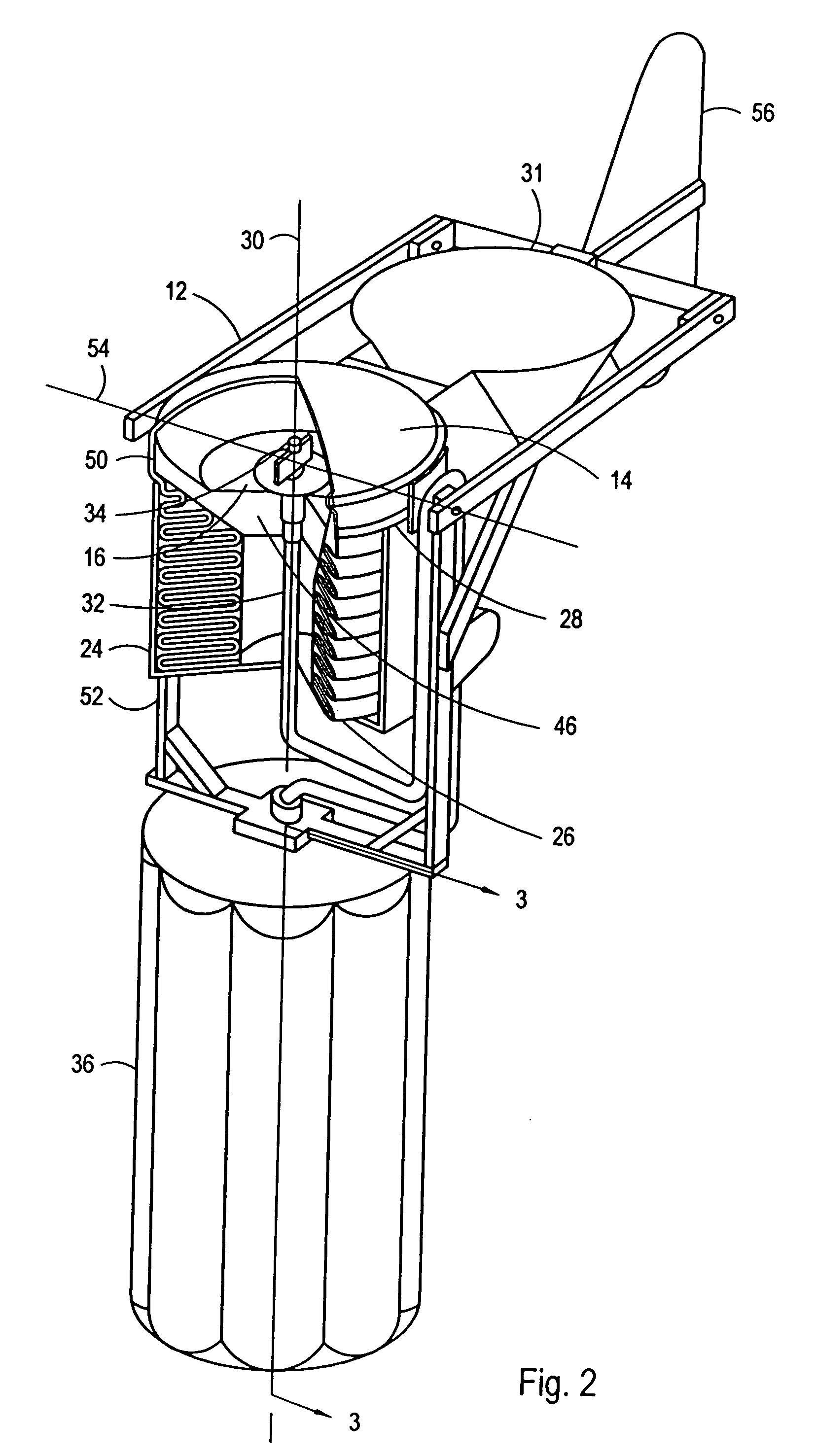Aerostat deployment apparatus
a technology for aerostats and deployment apparatuses, which is applied in the direction of mobile visual advertising, instruments, transportation and packaging, etc., can solve the problems of large amount of loose aerostat cloth during inflation, damage to aerostats, and the location of helium inflation “bubbles” to shi
- Summary
- Abstract
- Description
- Claims
- Application Information
AI Technical Summary
Benefits of technology
Problems solved by technology
Method used
Image
Examples
Embodiment Construction
[0006]The present invention is directed to an apparatus for inflating and deploying an aerostat. For the present invention, the aerostat is preferably an elongated cloth balloon having a nose section at one end and a tail section at the other. The inflation and deployment apparatus includes a substantially cylindrical container for housing the deflated aerostat. The cylindrical container is formed with an open end and defines a longitudinal axis. A feed hose is provided to inflate the aerostat. Specifically, the feed hose passes into the container and extends along the longitudinal axis of the container to a hose end that projects slightly from the open end of the container. The other end of the feed hose is connected to a gas source that is located outside the container.
[0007]To position the deflated aerostat on the apparatus, the deflated aerostat is first folded to juxtapose the nose of the aerostat with the tail of the aerostat. Next, the nose of the aerostat is attached to the ...
PUM
 Login to View More
Login to View More Abstract
Description
Claims
Application Information
 Login to View More
Login to View More - R&D
- Intellectual Property
- Life Sciences
- Materials
- Tech Scout
- Unparalleled Data Quality
- Higher Quality Content
- 60% Fewer Hallucinations
Browse by: Latest US Patents, China's latest patents, Technical Efficacy Thesaurus, Application Domain, Technology Topic, Popular Technical Reports.
© 2025 PatSnap. All rights reserved.Legal|Privacy policy|Modern Slavery Act Transparency Statement|Sitemap|About US| Contact US: help@patsnap.com



